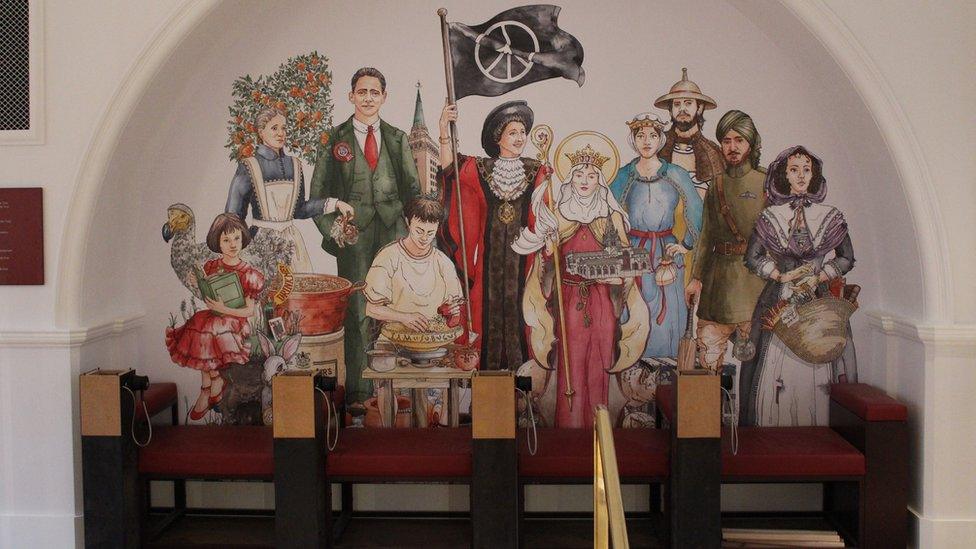Oxford University excavations: Prehistoric burial mound found under college
- Published
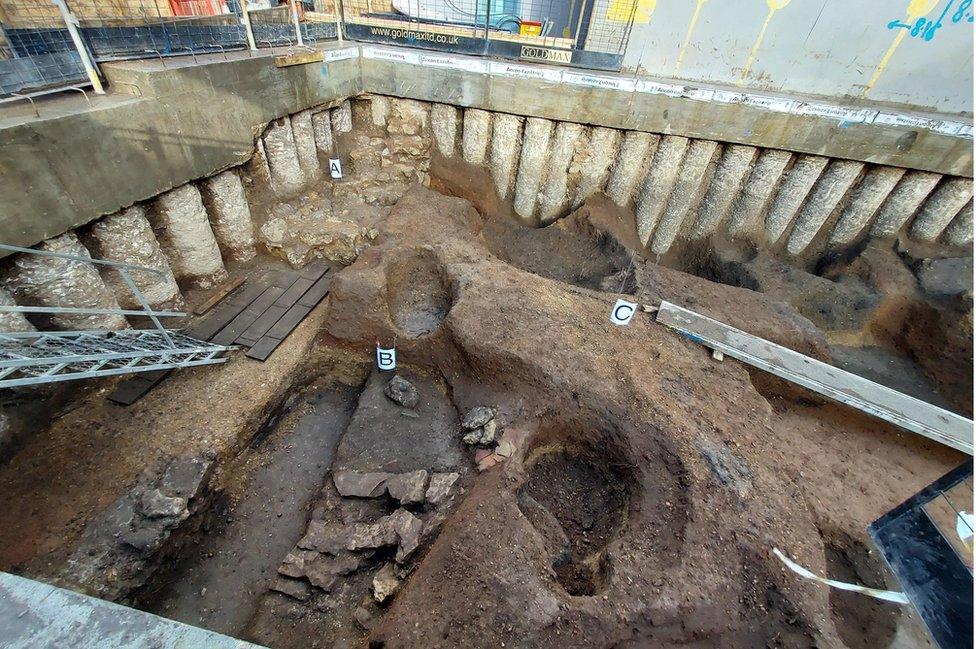
The remains are typical of a Bronze Age barrow used for human burials
Archaeologists believe they may have found evidence of a 4,000-year-old prehistoric burial mound during the construction of new student flats.
The site has already yielded the remains of St Mary's, a lost 15th Century Oxford University college.
Latest discoveries include a fragment of skull, part of a human jawbone, and remains typical of a Bronze Age barrow used for human burials.
Thirty flats are being developed at Brasenose College's Frewin Annexe.
Oxford Archaeology's senior project manager, Ben Ford, said St Mary's College, which had already been a "significant archaeological discovery", appeared to have been built above a circular burial mound.
He added: "These intriguing discoveries strongly suggest a prehistoric burial mound was on this site thousands of years before Oxford even existed.
"The jawbone is robust and clearly from an individual of some stature. The mound is built from reddish colour soils and natural gravel - its survival is very unusual.
"We are now searching for the circular ditch which would have surrounded it, and the remaining bones of the individual."
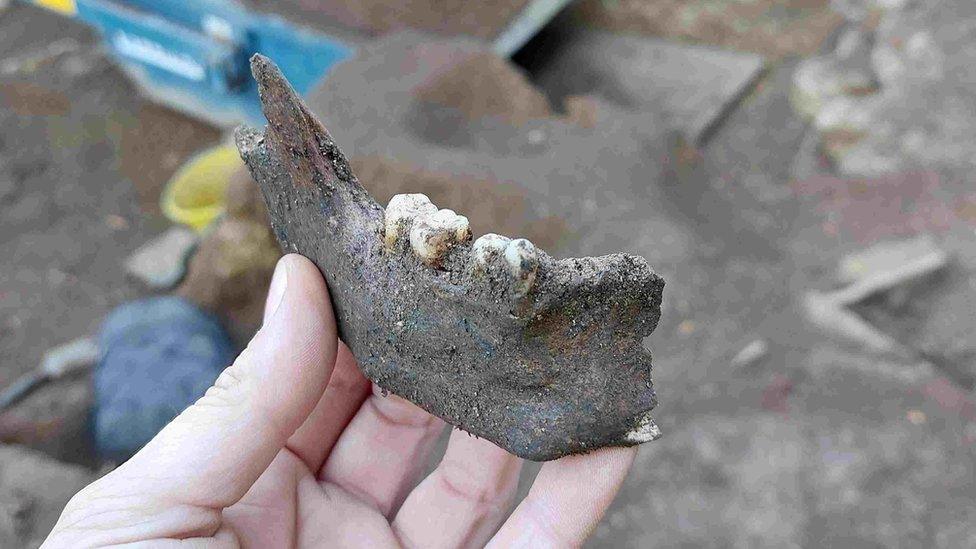
Latest discoveries include part of a human jawbone
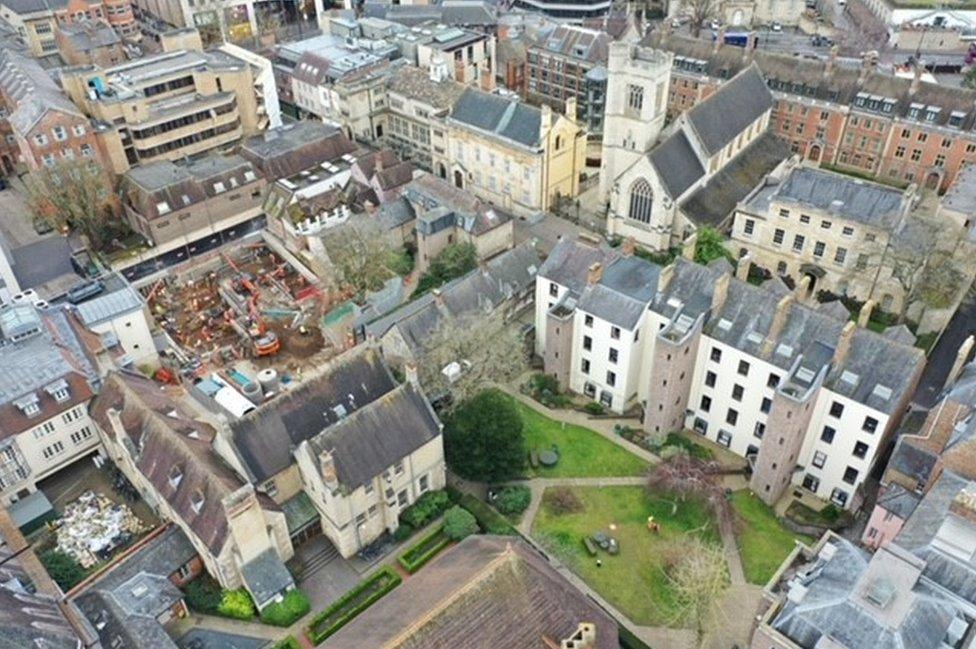
Thirty flats are being developed at Brasenose College's Frewin Annexe
During the Bronze Age important people were commemorated under large earthen mounds as part of an extensive burial ground in the region.
Mr Ford said: "Frewin Hall is one of the oldest buildings still in use in the city, and when we started this project, we hoped to uncover evidence of Oxford's earliest years as a fortified Saxon town, as well as its later use as the residence of some of Oxfords most powerful Norman families.
"However, it had not been previously documented that there was a prehistoric burial site here."
He said the "rare discovery" had brought a "new dimension" to a "rich archaeological area".
Artefacts previously found at the site include ceramic beer jugs, coins, glass vessels, highly decorated window glass, and decorated floor tiles.
At a recent open day 500 visitors came to see some of the excavations.
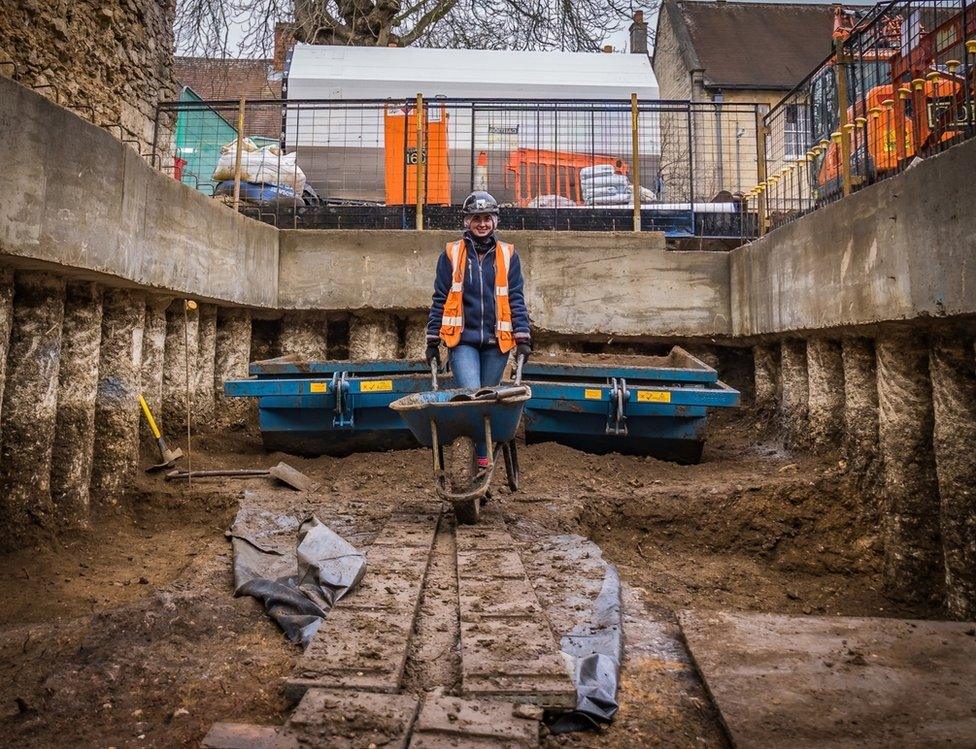
The site has already yielded the remains of St Mary's, a lost 15th Century Oxford University college

Follow BBC South on Facebook, external, Twitter, external, or Instagram, external. Send your story ideas to south.newsonline@bbc.co.uk, external.
Related topics
- Published1 February 2022
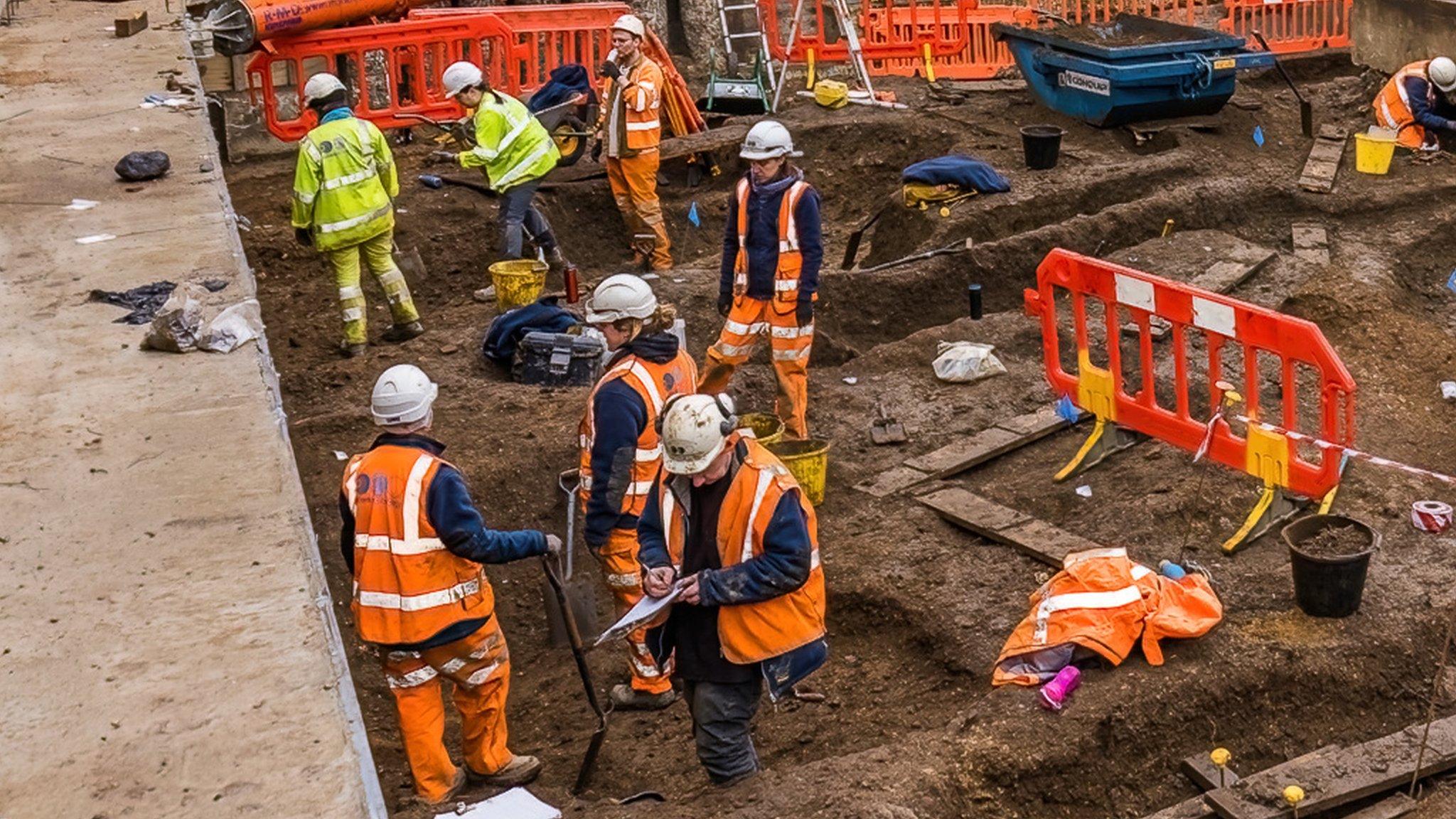
- Published11 October 2021
